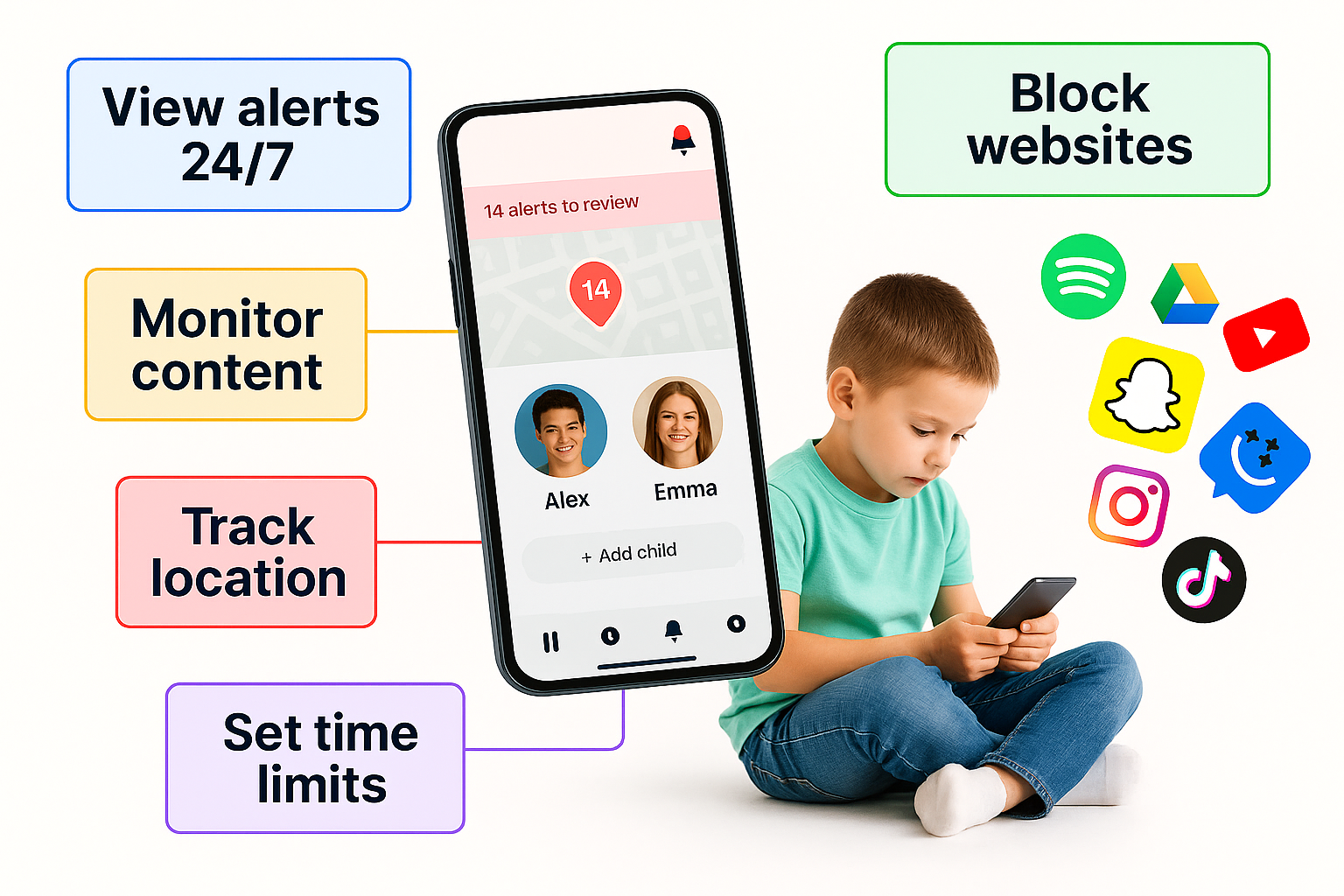📊 What a New Study Reveals About Kids, Smartphones, and Digital Wellness
Smartphones and Children: Surprising Findings
A recent University of South Florida (USF) study challenges long-held beliefs about kids and technology. While many assume smartphones only harm children, the research suggests that digital wellness habits for children may improve when they own a device — provided parents set boundaries.
At the same time, the survey highlights the dangers of social media posting and the sharp impact of cyberbullying on middle-schoolers’ mental health.
The findings come from more than 1,500 children ages 11–13, and will form the foundation of a 25-year project tracking how digital media use shapes health and wellbeing.
Key Discoveries From the USF Study
- Kids with phones reported stronger wellbeing. Children who owned smartphones were less likely to show signs of depression or anxiety and more likely to spend time with friends offline.
- Phone ownership starts young. More than 70% of 11-year-olds had their own phone, with many getting one by age 8½.
- Social media posting was tied to poor outcomes. Kids who frequently shared posts were twice as likely to report high levels of anxiety, depression, and sleep troubles.
- Cyberbullying has lasting effects. Nearly 60% of participants experienced online bullying recently, and those kids were far more likely to struggle with anger, sadness, and difficulty stepping away from screens.
What Parents Should Consider
The researchers stress that the phone itself isn’t the danger — it’s how it’s used. To support healthier outcomes, families can:
- Introduce healthy screen boundaries for young kids (like no phones at bedtime).
- Avoid letting children post publicly on social platforms.
- Keep an eye out for subtle signs of cyberbullying.
- Choose a first phone with limited features to encourage responsibility without overwhelming distractions.
Why Phone Choice Matters
Many families are rethinking the kind of device a child should start with. Instead of handing over a full smartphone, some parents opt for a kid-safe mobile device design that emphasizes calling, texting, and safety features only.
Others use this milestone as a teaching moment — introducing phone etiquette rules for families to guide respectful and responsible use. By combining structure with technology that matches a child’s maturity, parents can help kids succeed.
Looking Ahead: A 25-Year Study
This USF research is just the beginning. Over the next two decades, scientists will follow children from adolescence to adulthood to explore:
- The effect of binge-watching and short videos on attention span.
- How early phone habits shape sleep and mental health later in life.
- Whether offline activity alternatives for tech-addicted kids can improve long-term outcomes.
The goal is to give parents, teachers, and health providers clearer guidance on raising balanced, resilient kids in a digital world.

